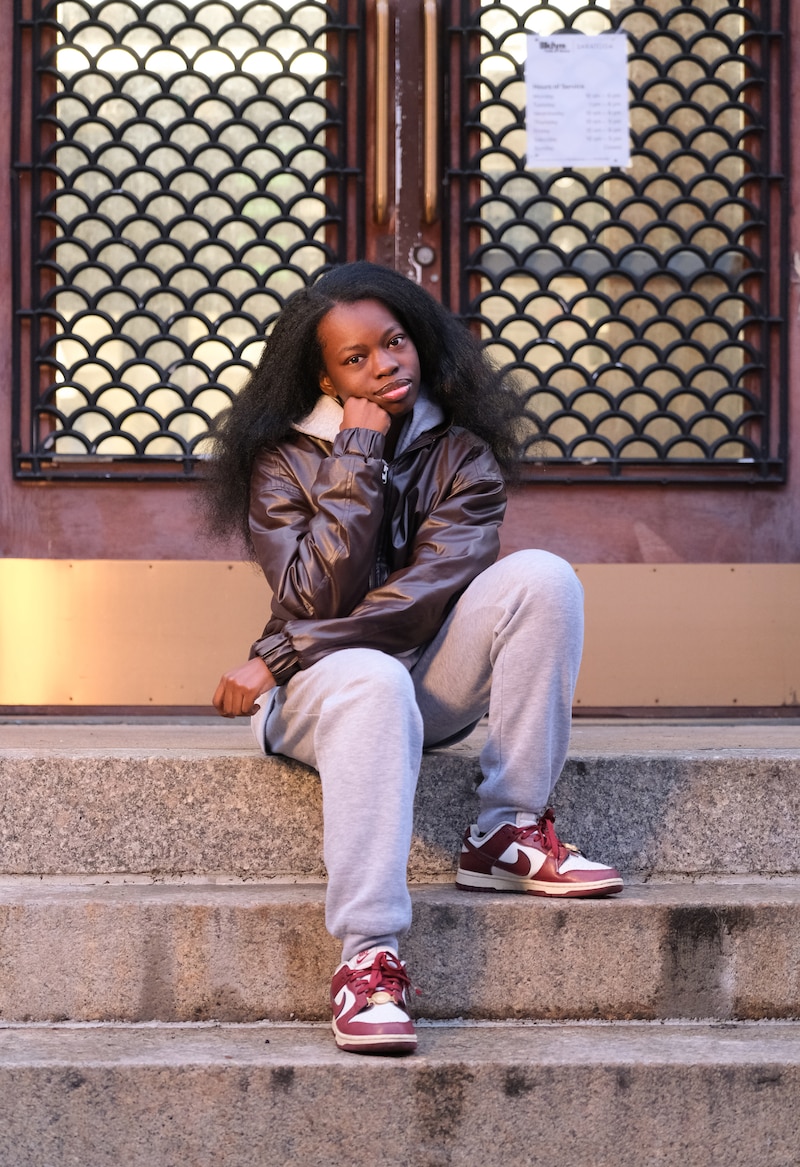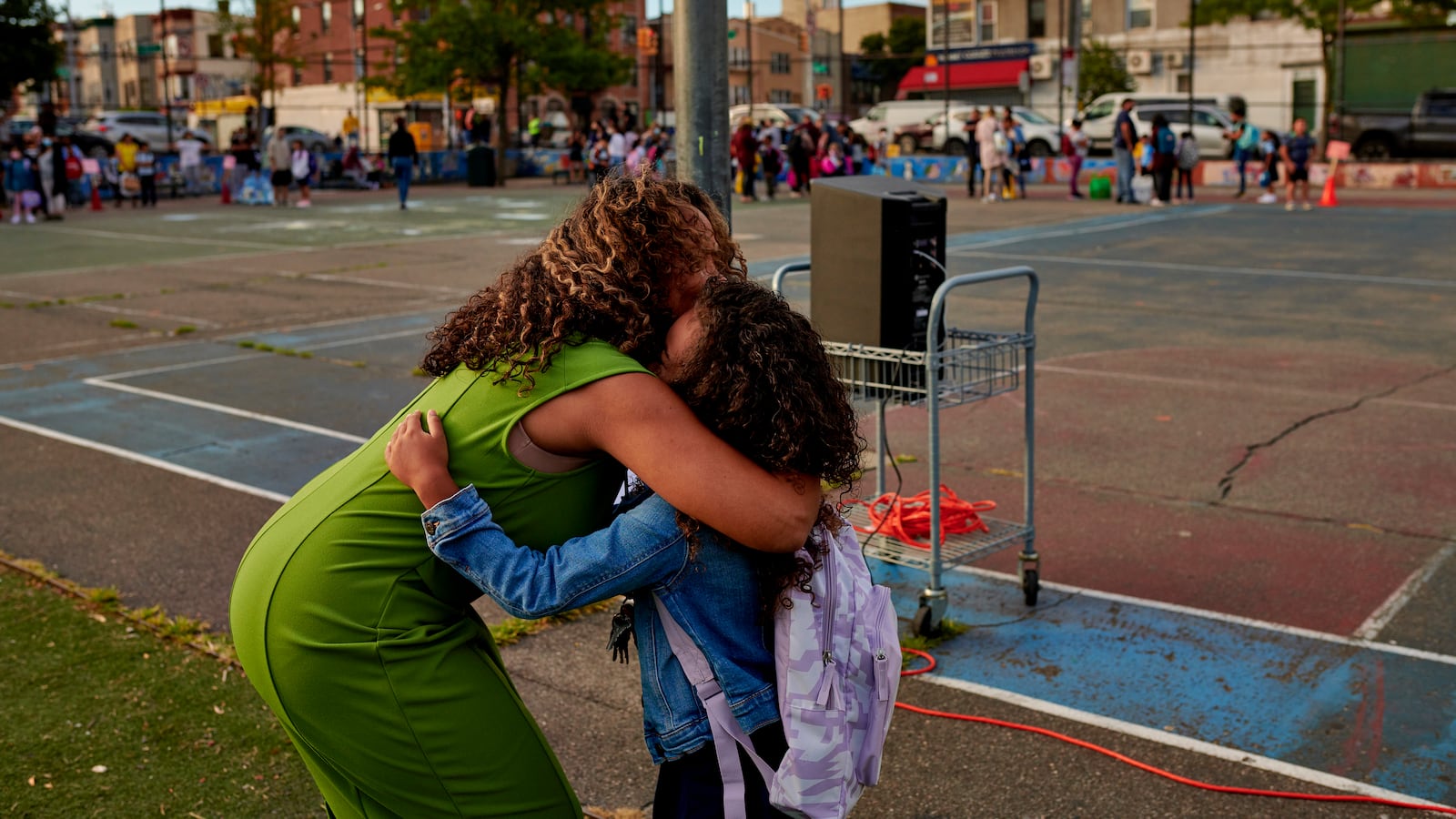By nearly every academic measure, girls in New York City’s public schools are outperforming boys.
Their four-year graduation rate is 10 points higher. After graduating, they attend college at a rate 11 percentage points higher. They far outpaced boys on 3-8 grade English state tests, while performing similarly to them in math.
Yet despite their academic success, girls report far less satisfaction with their school experiences. A Chalkbeat analysis of responses to the 2023 New York City school survey, a massive annual questionnaire in which more than 350,000 middle and high school students participated last year, found girls report significantly lower levels of satisfaction across a range of questions about students’ classroom experiences and their interactions with peers and adults.
Four in five girls reported feeling stressed during learning in the past year, compared to around three in five boys. And girls were 10 percentage points less likely than boys to report that their teachers noticed when they have trouble learning something, or support them when they’re upset.
While there has been a growing awareness of the school achievement crisis among boys, girls’ struggles at school can be less obvious – and more likely to go unaddressed.
For girls, there’s an “unsaid pressure” to perform well in school, said Camila Sosa, a 17-year-old rising senior at Uncommon Collegiate Charter High School in Brooklyn. For boys, she believes, the message is often, “Thank you for doing us this favor.’”
It’s not just in an academic context that girls report being unhappier in school: They were also seven percentage points more likely than boys to say students at their school harassed, bullied, and intimidated each other, both online and in person.
The problem is particularly acute for Black girls, who reported the lowest level of satisfaction of any race and gender group in 55% of survey questions. Black girls were most likely to say students at their school bullied each other.
By contrast, Asian American girls reported feeling the most academic stress and pressure, and were the least likely to say a teacher would notice when they had struggled in class.
Meanwhile, students who are neither male nor female, a category the Education Department only recently began tracking, reported worse outcomes than male or female students across nearly every question, though only 41 respondents identified themselves to the district as nonbinary.
Experts say the New York City school survey data speaks to broader national trends showing girls suffering disproportionately from the ongoing youth mental health crisis in the wake of the COVID pandemic.
“Girls tend to have higher levels of anxiety and depression,” said Tamar Mendelson, a professor of American health and director of the Center for Adolescent Health at Johns Hopkins University. “And these levels have been increasing.”
A survey from the Centers for Disease Control and Prevention found that 60% of teenage girls reported feeling persistent sadness or hopelessness in 2021, compared to 30% of boys – disparities that inevitably show up in school too, according to educators.
“We can’t feel surprised girls are feeling less safe, less seen, less heard, less treated fairly in school because we live in a society where that’s true,” said Emily Paige, the principal of Urban Assembly Unison middle school in Brooklyn.
Some other students and educators questioned whether some of the divergence in the school survey results could stem from the different ways boys and girls approach questions about mental health and happiness in school.
“Men, a lot of the time, they don’t want to be perceived as weak,” said Mia Gabriella-Bedoya, a 17-year-old rising senior at the Brooklyn High School for Law and Technology. “So they just say like, everything is fine.”
But, whatever the cause, students said the results should serve as a wakeup call for schools to do more to support their female students – and to remember that success in the classroom is no guarantee girls are doing okay.
“You have to acknowledge just the overall biases … in school,” said Sosa. “The normal expectations towards women about how they should dress and how they should act. It needs to be addressed as a whole.”
The Education Department has guidelines for schools on gender inclusion, a citywide gender equity coordinator, and a newly formed Gender Equity Team that will provide schools with professional development on “gender-related access and equity,” according to a spokesperson.
“Ensuring that every student of every gender, [sic] is heard, affirmed, and supported in their educational journey is a priority for New York City Public Schools,” wrote spokesperson Jenna Lyle in an email.
More success in school, but less support
In many cases, girls learn from a young age how to be compliant students — a skill that can bring academic success, but doesn’t ensure their needs are being met, said Chris Emdin, a professor of science education and Maxine Greene chair for distinguished contributions to education at Columbia University Teachers College.
“What we’re finding is that girls, Black girls in particular, learn by the time they get to middle school and high school that their role, in order to be seen as a good student… is actually to enact certain behaviors that are a detriment to [their] mental health, their emotional health,” said Emdin, who is currently conducting research on gender and classroom experiences in New York City schools.
“Even if you‘re getting good grades, you’re still not having your needs met. [You’re] still being ignored. [You’re] still not being paid attention to,” he said.
Boys, by contrast, can soak up a disproportionate share of classroom attention, educators and students said — even if that attention is negative.
“We definitely see that we have boys in our school who make their presence known, make connections with staff and make their needs known really, really well,” said Paige, the Brooklyn middle school principal. “Then we have students who are girls who are much quieter, much less likely to volunteer that kind of information.”
There can be downsides to the disproportionate attention. Boys were twice as likely as girls to be suspended from school during the 2022-23 school year. They were also twice as likely to be classified as having a learning disability, a designation that can sometimes carry a stigma but also brings extra support, including smaller classes and additional teachers.
By contrast, female students craving more attention and understanding from school staff often feel like they have to fight for it, said Sosa, the rising senior at the Brooklyn charter school.
“Most of the time they [girls] have to speak out for themselves,” she said.
Girls bear the brunt of ongoing youth mental health crisis
Girls’ negative experiences in school often begin with the pressures and expectations they face outside of it.
Derry Oliver, a 17-year-old who graduated last spring from Cobble Hill School for American Studies in Brooklyn, said her female friends deal with the “pressures that come with being a woman, such as safety, or what they are wearing, who they can be around, and because of that, it’s harder for them to be in the classroom and focus.”

Those social pressures can be particularly intense and damaging for Black girls, who deal with a combination of racism and sexism in many facets of their lives, said Krystal Folk, a former school social worker in the Bronx.
“What is the idea of beauty? It’s not Black girls,” Folk said. “If you’re not meeting that standard, there’s a lot of internalization happening.”
Girls, particularly Black girls, have also reported feeling disproportionately targeted by school dress code policies.
The rapid growth of social media and the lingering effects of the pandemic have likely worsened the mental health crisis facing girls, educators and experts said.
Some schools reported an uptick in incidents of sexual harassment when students returned to school following COVID-19 school closures, a trend one staffer attributed to kids spending more time online.
But educators said it can also be hard to tell how much of the gender disparities in the school survey data comes from boys and girls experiencing different things in school, and how much comes from the two groups interpreting and talking about those experiences differently.
Anna Nelson, an assistant principal at Bronx Latin, a 6-12 public school, said in her experience there are differences in how male and female students approach the survey. “Girls are more thoughtful and take their time with the [school] survey,” she said. “Sometimes the guys will go through and answer things just like whatever.”
The results also raise questions about whether boys and girls have different definitions of bullying and harassment. Girls and boys who attended the same schools often had very different perceptions about how much bullying takes place in their schools, potentially indicating that they either witness different behaviors, or perceive the same behaviors differently.
Some schools look for solutions
Education Department officials said they began breaking down school survey data by demographics in 2021 to give schools a more granular look at disparities – and allow them to take action.
At Urban Assembly Unison Middle School in Brooklyn, educators, with the help of survey data, noticed that female students were less likely to speak up when teachers simply threw out a question to the entire class, said Paige, the principal.
“The mental health crisis hit particularly with adolescent girls,” Paige said. “If you’re in a group of 25 and are allowing impulse to rule who speaks, those who have more social anxiety might be less likely to speak.”
To address those gender disparities, the school revamped how teachers solicit student participation in class, building in time for students to think about an answer and to share with classmates in smaller groups before opening the discussion to the full class.
Some educators pointed to single-gender settings as another promising approach. New York City has a range of public schools designated for just girls and just boys. The city’s high schools across the board are unusually gender-segregated compared to other large districts. And even within schools, clubs like My Brother’s Keeper or female empowerment groups that provide single-gender spaces can also help, educators and students said.
There are also new efforts to create schools that are affirming for LGBTQ+ and gender nonconforming students, though one such proposal to open a charter school was not greenlit this year.
Michael Elsen-Rooney is a reporter for Chalkbeat New York, covering NYC public schools. Contact Michael at melsen-rooney@chalkbeat.org.
Liza Greenberg is a senior at the Bronx High School of Science and a student journalist for The Science Survey.
Kae Petrin is data and graphics reporter for Chalkbeat. Contact Kae at kpetrin@chalkbeat.org.

